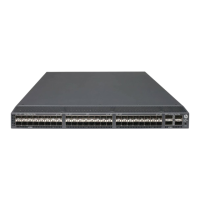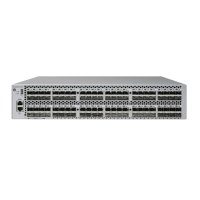34
Parameters
class-name: Specifies the name of a DHCP user class, a case-insensitive string of 1 to 63
characters.
Usage guidelines
You can also use this command to enter the view of an existing DHCP user class.
In the DHCP user class view, use the if-match command to configure a match rule to match specific
clients. Then use the class command to specify an IP address range for the matching clients.
Examples
# Create a DHCP user class test and enter DHCP user class view.
<Sysname> system-view
[Sysname] dhcp class test
[Sysname-dhcp-class-test]
Related commands
address range
class
if-match
dhcp server always-broadcast
Use dhcp server always-broadcast to enable the DHCP server to broadcast all responses.
Use undo dhcp server always-broadcast to restore the default.
Syntax
dhcp server always-broadcast
undo dhcp server always-broadcast
Default
The DHCP server reads the broadcast flag in a DHCP request to decide whether to broadcast or
unicast the response.
Views
System view
Predefined user roles
network-admin
Usage guidelines
This command enables the DHCP server to ignore the broadcast flag in DHCP requests and
broadcast all responses.
If a DHCP request is from a DHCP client that has an IP address (the ciaddr field is not 0), the DHCP
server always unicasts a response (the destination address is ciaddr) to the DHCP client regardless
of whether this command is executed.
If a DHCP request is from a DHCP relay agent (the giaddr field is not 0), the DHCP server always
unicasts a response (the destination address is giaddr) to the DHCP relay agent regardless of
whether this command is executed.
Examples
# Enable the DHCP server to broadcast all responses.
<Sysname> system-view

